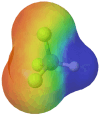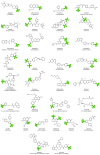The Role of Trifluoromethyl and Trifluoromethoxy Groups in Medicinal Chemistry: Implications for Drug Design
- PMID: 40733275
- PMCID: PMC12298972
- DOI: 10.3390/molecules30143009
The Role of Trifluoromethyl and Trifluoromethoxy Groups in Medicinal Chemistry: Implications for Drug Design
Abstract
One of the key strategies in drug design involves modifying molecular scaffolds with specific chemical groups, or side chains, to enhance biological and physicochemical properties. These modifications can strengthen interactions with biological targets or improve pharmacokinetic and physicochemical characteristics, factors that are critical in transforming a compound into a viable drug candidate. In this overview, we focus on the presence of trifluoromethyl and trifluoromethoxy groups on different molecules, highlighting their relevance and impact in medicinal chemistry. The discussion and future perspectives in the field are based on a comprehensive review of current literature, with data sourced mainly from SciFinder and PubMed.
Keywords: drug design; medicinal chemistry; trifluoromethoxy group; trifluoromethyl group.
Conflict of interest statement
The authors declare no conflicts of interest.
Figures




References
Publication types
MeSH terms
Substances
LinkOut - more resources
Full Text Sources

